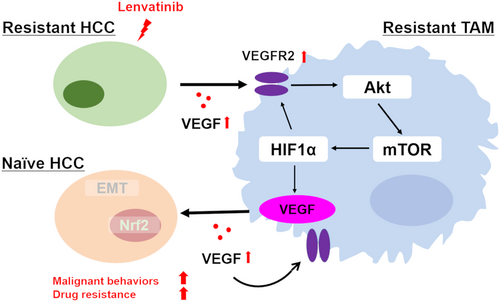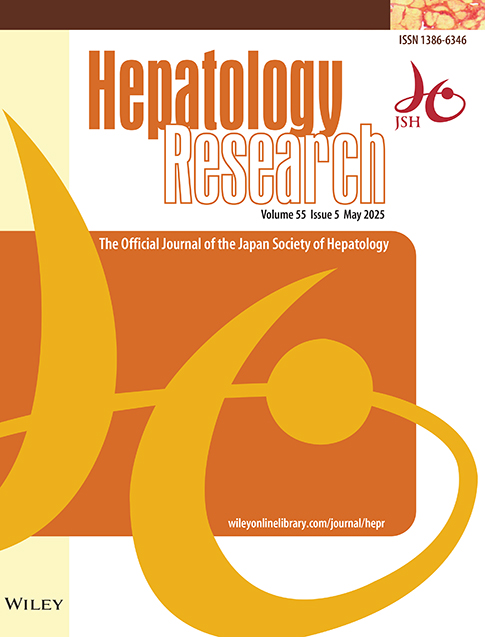Vascular endothelial growth factor released from lenvatinib-resistant hepatocellular carcinoma promotes malignant behavior and drug resistance through tumor-associated macrophages
Yukako Takehara and Yuhei Waki contributed equally to this study.
Abstract
Aim
Lenvatinib is one of the molecularly targeted drugs used worldwide in hepatocellular carcinoma (HCC) treatment, but the acquisition of drug resistance is a major problem. The mechanisms that make HCC lenvatinib-resistant (LR) in the tumor microenvironment are largely unknown. Here, we examined the impact of LR HCC cells on tumor-associated macrophages (TAMs) regarding tumor progression and drug resistance, focusing on vascular endothelial growth factor (VEGF) secretion by LR HCC cells.
Methods
Hepatocellular carcinoma cells were cultured with lenvatinib to obtain cells with approximately 4-fold lenvatinib resistance. Monocyte-derived macrophages were cultured in the conditioned medium (CM) of LR HCC to induce LR TAMs. Secretion of VEGF by naïve HCC cells, LR HCC cells, TAMs, and LR TAMs was assessed. The macrophage phenotype and VEGFR2 expression in both TAMs were evaluated. Additionally, the effects of inhibiting VEGF secretion in LR HCC cells on the TAM malignant potential were investigated. Tumor-associated macrophages induced by VEGF-inhibited LR HCC were defined as modified LR TAMs.
Results
Secretion of VEGF was elevated in LR HCC. Lenvatinib-resistant TAMs had increased expression of M2-like macrophage markers and increased expression of VEGFR2 compared with naïve HCC-derived TAMs. Lenvatinib-resistant TAM-CM promoted malignant behaviors and lenvatinib resistance in naïve HCC cells and LR HCC cells. However, the modified LR TAMs did not increase M2 polarization markers or decreased VEGFR2 expression. The elevated VEGF secretion in LR TAMs was not seen in modified LR TAMs.
Conclusions
Increased VEGF secretion from LR HCC promoted malignant behaviors and lenvatinib resistance through LR TAMs in the tumor microenvironment.
Graphical Abstract
CONFLICT OF INTEREST STATEMENT
M.S. received research grants from Taiho Pharmaceutical Co., Ltd. The other authors have no conflicts of interest for this article.
Open Research
DATA AVAILABILITY STATEMENT
The data that support the findings of this study are available from the corresponding author upon reasonable request.





